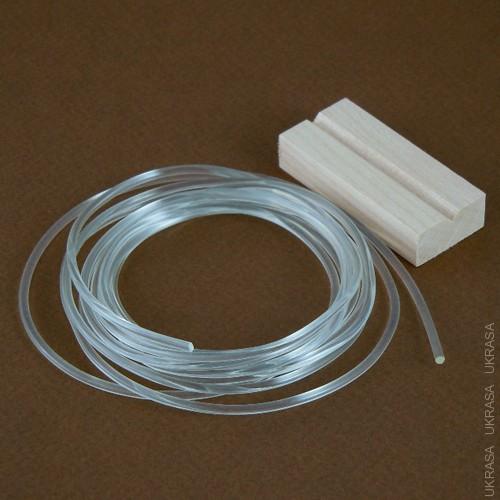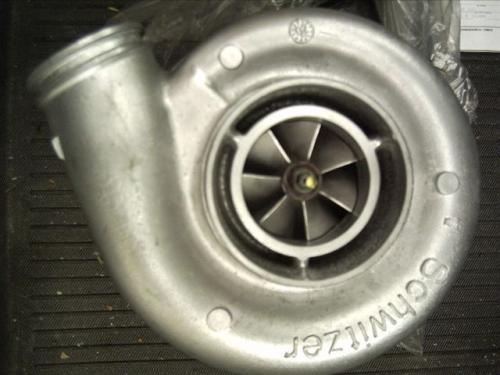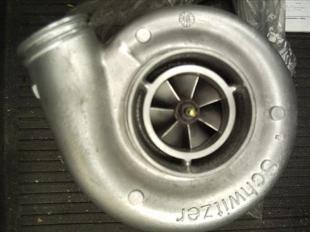
Turbo for everyone?
 Significantly improve the performance of almost every car? Maybe. Just install a turbocharger.
Significantly improve the performance of almost every car? Maybe. Just install a turbocharger.
Most modern diesel engines are equipped with a turbocharger. This is the result of almost the same advantages when used in self-ignition engines - simplicity of design, performance effects and ease of control. Turbochargers are also found in spark-ignition passenger cars, especially those intended for all kinds of rallies and races. There is also a growing interest in serial manufacturers of gasoline engines, as they not only increase engine power, but also contribute to  improving the purity of exhaust gases. Therefore, it is quite possible that soon these devices will be installed on more cars, mainly due to the tightening of environmental standards.
improving the purity of exhaust gases. Therefore, it is quite possible that soon these devices will be installed on more cars, mainly due to the tightening of environmental standards.
A turbocharger is a relatively simple device - it consists of two main elements - a turbine driven by engine exhaust gases, and a turbine compressor driven by a turbine mounted on a common shaft. Due to the increased strength of the materials used in the construction, the size of the turbochargers has been reduced, so they can be used in almost every car with minor modifications. The problem, however, is to use the correct device for a particular engine.
Since the turbocharger causes a very large increase in the power of the power unit (up to 6 times), it may turn out that such a “tuned” engine will not work for long, or it will be damaged by an explosion or mechanical “expansion” of its components (pistons, bushings, connecting rod). Therefore, the “turbo” installation is not only the assembly of the corresponding device, but often the replacement of many engine components, for example, the camshaft. The turbine itself costs from several to several thousand zlotys. A few thousand more zlotys will have to be spent on an appropriate exhaust manifold, a new engine control chip costs about 2 zlotys. The use of the so-called intercooler, i.e. an intercooler that allows you to lower the temperature of the compressed air and further increase engine power, this is another expense of several thousand. zloty.
While in theory a turbocharger can be fitted to any engine, some engines may not have this capability. All units with not very rigid crank systems (for example, in Polonaise or old Skoda) and not very efficient cooling and lubrication systems are especially disadvantaged in this area.
Beware the Regenerated
Turbochargers reach a speed of 15 - 60 thousand. rpm (sporty even up to 200 rpm). Therefore, their design must be very precise, and their operation requires compliance with appropriate rules that will protect the device from damage.
It happens that companies offering such turbochargers get them from wrecked cars. Such devices are washed, cleaned, sometimes refurbished using unsuitable parts, and then reassembled. The disadvantage in this case is the unbalance of the rotating parts. After all, the wheels of cars rotating at minimum (compared to a turbine) speeds are balanced, to say nothing of a rotor rotating at a speed of over 500 revolutions per second. Such turbochargers can be bought for a few hundred zlotys, but there is a high probability that they will quickly fail.
Therefore, each remanufactured turbocharger must have a certificate with a warranty card. The regeneration or repair of such a turbocharger can be carried out by a suitably equipped service center and preferably with years of experience, which guarantees a quality service.
exploitation
Of fundamental importance for the correct operation of the turbocharger is the way the engine is turned off after the vehicle has stopped. If the drive was running at high speeds, wait a few to several tens of seconds until the turbocharger rotor speed drops, and then turn off the ignition. When the ignition is turned off at high turbocharger speeds, the pump stops supplying fresh oil to the bearings, and the remaining oil remains heated to high temperatures, charring and destroying the bearings.
Symptoms of a turbocharger failure are primarily a drop in engine power and the appearance of black or blue smoke from the exhaust pipe. Black color indicates insufficient lubrication and soot burning, and blue indicates leaks in the oil system. More serious malfunctions are manifested by increased noise and knocking. In this case, immediately go to the service. There may be several reasons for this. The most common are:
– foreign objects in the intake air – this leads to damage to the blades and thus to the loss of balance of the rotor, which in turn can lead to the collapse of the entire device,
– oil contamination – causes damage to bearings and shaft journals, which also leads to imbalance of rotating elements,
- insufficient amount of oil - contributes to damage to the bearings, loss of tightness and even cracking of the shaft due to increased friction,
– foreign bodies in the exhaust gases (e.g. due to damaged directional valves, heaters) – similar effect to foreign bodies in the intake air; damage to the rotor of the turbine that drives the compressor,
– too high temperature of the exhaust gases – causes a thermal overload of the turbocharger, which leads to coking of the oil, damage to the turbine blades and its bearings,
- Excessive exhaust pressure - causes axial forces acting on the turbine rotor, which accelerates the wear of the thrust bearing and turbocharger o-rings.
Prices for new turbochargers range from 2,5 to 4 thousand. zloty. A device for a Volkswagen Passat 1.8 with a petrol engine costs PLN 2, for a Skoda Octavia 400 l (diesel) - PLN 1.9, for a BMW 2 (diesel) - PLN 800. The installation is relatively expensive - from about 530 to 3 thousand. PLN (the price includes the repair of the exhaust system). Basic regeneration with a repair kit costs PLN 800 - 7, the cost of a turbocharger after regeneration is from PLN 10 to 900.
